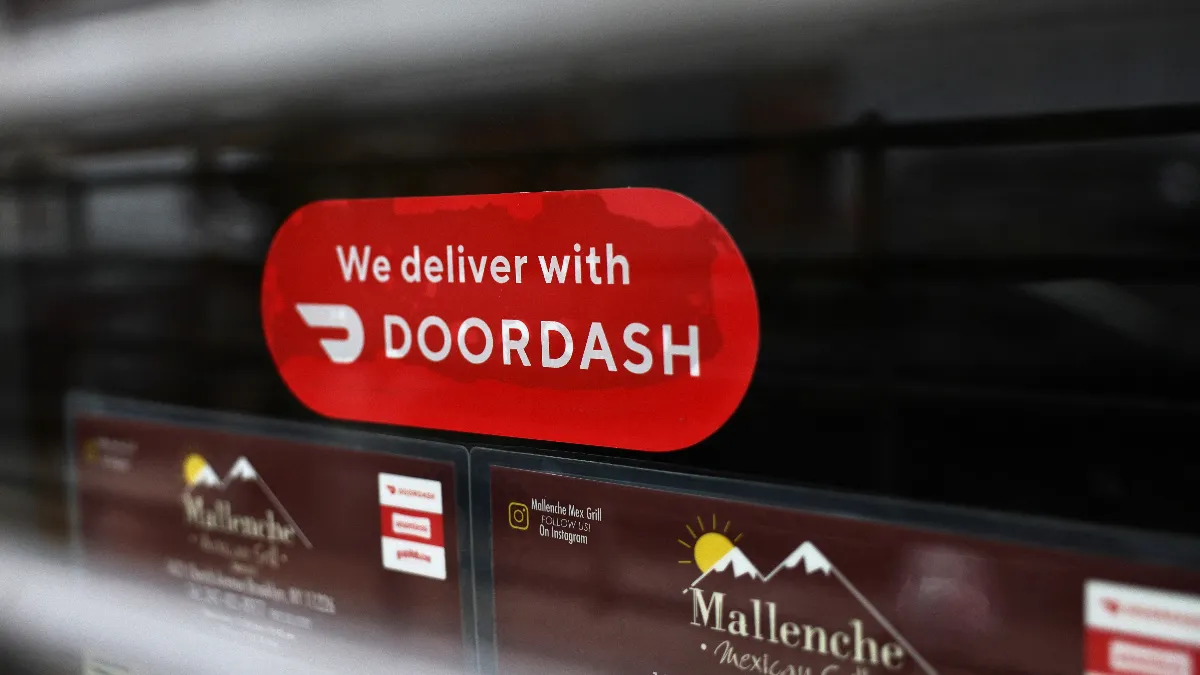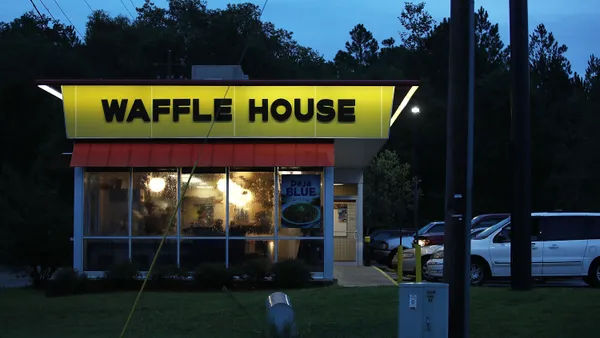Dive Brief:
- DoorDash has laid off about 1,250 employees, CEO Tony Xu said in a statement on the company’s website Wednesday. The delivery platform didn’t respond to a request for comment before press time.
- During the COVID-19 pandemic, DoorDash hired quickly to keep pace with growth and started many new businesses, but the company wasn’t as disciplined about managing team growth, Xu said.
- DoorDash’s operating expenses increased due to this hiring streak, and would have otherwise surpassed revenue, Xu said. The company will also continue to reduce non-headcount operating expenses.
Dive Insight:
These layoffs will right size the company and allow it to match its strategic priorities, Xu said.
“We must keep this level of discipline moving forward and act with the hunger, efficiency and creativity of the younger startup we once were while leading with the responsibility of the market leader we’ve become,” Xu said in the statement, adding the company will hire employees in a “targeted and rigorous way.”
At the end of 2021, DoorDash had around 8,600 employees globally, according to the company’s 10-K filing. Prior to these layoffs, DoorDash had roughly 20,000 employees, meaning the job cuts impacted 6% of its workforce, DoorDash wrote in an email to Restaurant Dive. This headcount growth also includes over 3,700 employees from Wolt, which DoorDash acquired in June. Xu’s letter indicates the layoffs also impacted some of these employees, as well.
According to the company’s 10-Q filing for the quarter ending Sept. 30, 2022, a majority of DoorDash’s employees have been with the platform for under 24 months. The company also made significant investments in its technology, customer service and sales and marketing infrastructure. DoorDash said no specific department will be impacted, and the layoffs won’t result in any service shutdowns.
Much like other companies in the third-party delivery space, DoorDash posted record revenues during the COVID-19 pandemic, but many of the dynamics driving revenue growth have reversed, Neil Saunders, managing director of GlobalData, said in an email to Restaurant Dive.
“Many smaller companies are now seeing sales come under pressure. As the largest player in the sector, DoorDash has managed to avoid this difficulty and has posted continual uplifts in both orders and revenue numbers,” Saunders said. “The continued rise of DoorDash, which is helped by an expansion into various delivery agreements with retailers, is impressive. The problem for DoorDash is that, like most fast delivery operators, it doesn’t make a profit.”
Cost of revenue, exclusive of depreciation and amortization, increased by 51% to over $2.5 billion during the first nine months of the year, according to DoorDash’s Q3 2022 10-Q filing. Contributing to that increase was $150 million in personnel-related compensation expenses and allocated overhead from headcount growth. During the first nine months of the year, losses from operations more than doubled to $754 million compared to $298 million during the same period last year.
Though losses have grown, revenue has too, rising in the last five quarters and jumping 33% year-over-year in Q3 2022. Adjusted EBITDA in Q3 2022 was $87 million, about 0.6% of marketplace gross order volume. However, that increased revenue has come with a cost. DoorDash is losing about 70 cents on every order it fulfills compared to a loss of 41 cents per order at the start of the fiscal year, Saunders said.
These job cuts aren’t likely to push DoorDash into profitability, Saunders said, but will help rein in growing losses, which could spark more confidence in investors who are becoming more discerning over returns on investment.
“DoorDash’s cuts sound a warning signal for the rest of the quick delivery space,” Saunders said. “While it has the capacity and financial muscle to trade through more challenging conditions, many of the smaller players do not. As the tide goes out, the unconvincing nature of their business models will be exposed.”
Layoffs of this nature have become more common this year as economic conditions have tightened in light of inflationary pressures and a potential looming recession next year. ChowNow CEO Chris Webb, who laid off almost 100 employees earlier this year, previously told Restaurant Dive that more layoffs are to be expected in the restaurant tech space even if business is good and financials are stable. Restaurant tech stocks are trading at all-time lows and companies are increasingly concerned about the cost of capital, Webb said.














